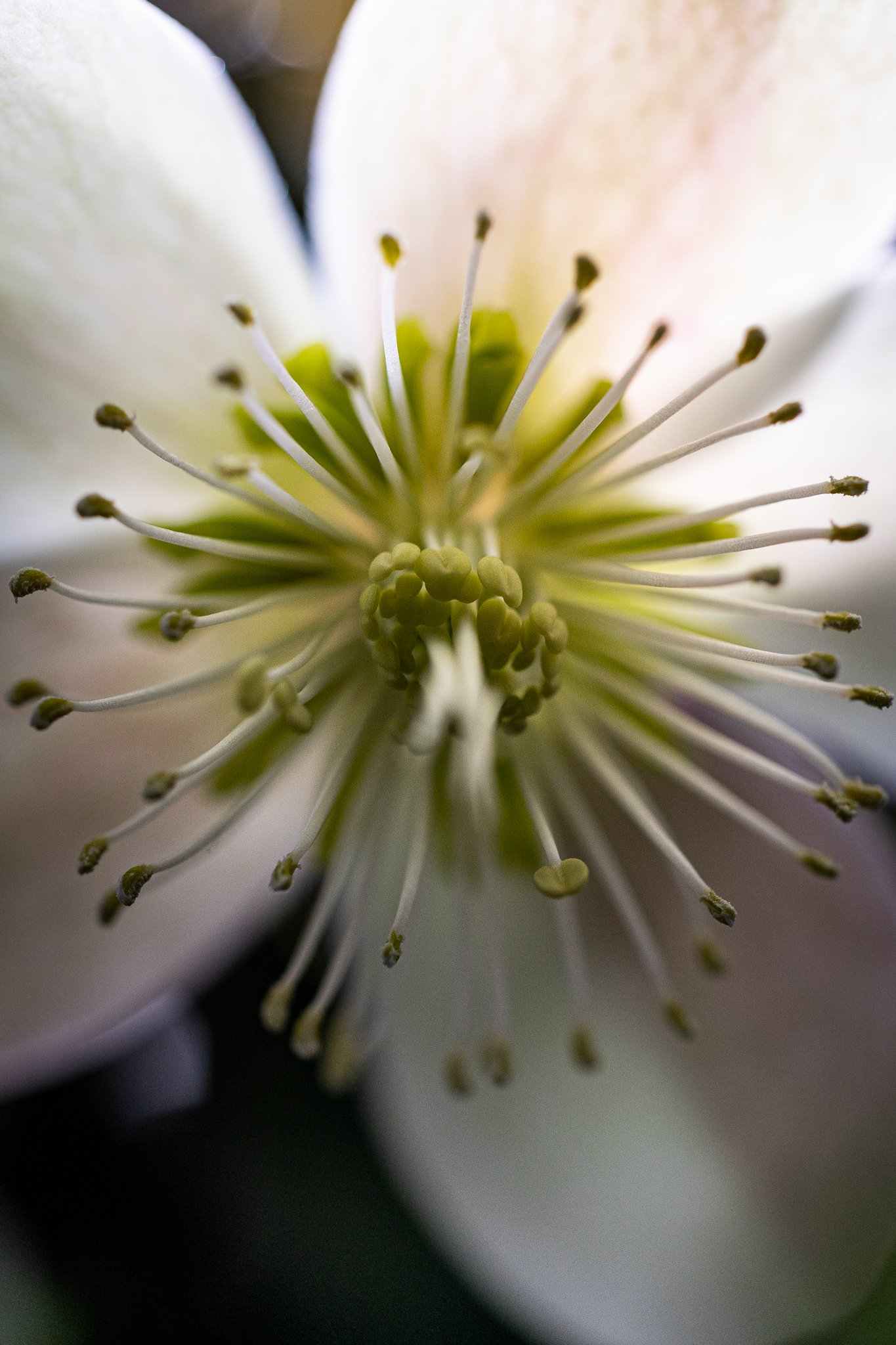Magical Hellebores
There is a point, around the first week of January, that both the garden and my state of mind reach a plateau of drab mid-tones of browns and greys. Dormancy lies heavy, not only in the dusty carpet of leaves that I have neglectfully left in the flower beds but around every corner. Spring feels a long way off and although I know the days are getting longer, by two minutes and 7 seconds every day, (yes its true, I looked it up) they feel no more light or spring-like. However, as is often nature’s way, a little reminder of garden cheeriness and colour, makes a most timely arrival to restore the status quo…
To reach our back door there are a series of old stone steps, to the right of which is a raised bed that follows the contours of the north side of the house. The hydrangeas that flourish here in the warmer months have long since dropped their leaves. Underneath the mass of bare branches, clumps of dark green foliage, are revealed. Normally, I pay them no mind at all, but then, in the quietest of moments, the Christmas Rose, or more accurately, the flowers of Helleborus Niger, on the back of a whisper, appear. Clusters of pristine white flowers, keeping low to the ground, like white linen handkerchiefs dropped onto the stony floor. Each time I climb the steps it's a joy to see their snowy white blooms glowing in the half-light. Surely it’s a sign?
For such a quiet and unassuming plant, it is surrounded by mists of myths and legends. There’s intrigue and mystery; tales of lunacy and murder, angels and tears, sorceress magic, darkness and despair.
Throughout history its poisonous attributes have been well known. During the Siege of Kirrha in 585 BC the Greeks reputedly used hellebore to poison the city’s water supply, leaving the defenders so weak with diarrhoea that they were unable to resist attack. In that pivotal moment, the attackers took control of the city and promptly slaughtered the entire population. The flower is also credited with the death of Alexander the Great no less, a consequence of ground hellebore being treacherously added to his wine by his cupbearer and so killing him twelve days later.
It plays its part in stories with less murderous affiliation. In the ancient Greek myth of the mad daughters of Proteus, the King of Tiryns. They were cured of their madness by Melampus, a famous healer and clairvoyant of the time, using hellebores, after seeing their cathartic effect on goats who browsed on the plants. An even more fanciful legend is the one of a poor shepherdess, Madelon, who realising she had no gift to present to the baby Jesus at his birth rushes out to the hillside looking for flowers but finding none in the snow cries in despair. The angel above seeing this, moved by her love and devotion, touches the ground where the tears were falling and changes them into winter flowers.
The Roman naturalist Pliny the Great of course had all sorts of great advice concerning Helleborus Niger. In his celebrated Natural History, he details certain ceremonies that should be performed when cutting them - a circle must be traced around the plant with a sword, then turning to the East and offering up a prayer to the gods, all the time hoping that no eagles fly nearby whilst the plant is being gathered, thereby avoiding an untimely death within the year. He also notes that it can be used in the fumigation of houses and has a magical ability to protect cattle.
Hellebores have been used in medicine throughout the centuries. During the middle ages it was known to purge the stomach and, in small doses, could be administered in cases of epilepsy, melancholy and madness. I imagine it must have been a fine line between healing and overdose. Folklore is peppered with mentions of hellebores, for both its poisonous and medicinal uses. Naturally it was favoured by witches in spells to induce invisibility.
Looking at the flowers blooming happily away in January when all else is sleeping, it’s not so strange that it has featured throughout time in lotions and potions, myths and legends.
In the garden they undergoes their own metamorphosis - the fine porcelain white flowers gradually change into a medley of pistachio greens and creamy yellows, speckled with violet markings like bewitched wrens eggs. They persevere during the fiercest of winter winds and crystal- tipped frosts. I check them after the storms, expecting the blooms to have been slewed down or frozen into oblivion, however they remain intact and pay no heed at all to wintery persecutions.
Eventually they become perfectly imperfect, petals turn ragged and the blotches of colour slowly disappear transforming themselves to a celandine green, ready to merge, with secret alchemy, back to the undergrowth. I am enchanted. I have no doubt the hellebore is a very magical plant indeed.



